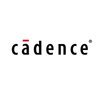Filter interviews by
Vishay Precision Transducers Quality Engineer Interview Questions and Answers
Vishay Precision Transducers Quality Engineer Interview Experiences
1 interview found
I applied via Job Portal and was interviewed in Nov 2021. There were 3 interview rounds.
Interview Questionnaire
1 Question
- Q1. About roles and responsibilities, Experience and technical details
Interview Preparation Tips
Top trending discussions






Interview questions from similar companies

I applied via Company Website and was interviewed in Nov 2023. There was 1 interview round.
(4 Questions)
- Q1. What is SPC, How we will calculate Cp and Cpk, Difference b/w sigma and Std dev, Which should be concentrate first whether Cp or Cpk
- Ans.
SPC is Statistical Process Control used to monitor and control quality. Cp and Cpk measure process capability. Sigma is population standard deviation.
SPC is a statistical method used to monitor and control processes to ensure quality standards are met.
Cp and Cpk are indices used to measure process capability. Cp measures how well the process fits within the specification limits, while Cpk measures how centered the proc...
- Q2. Drawing details GD and T., What is basic dimensions, MMC, LMC, where it will be used
- Q3. What is MSA, GAGE R and R, What is output in GRR, what will be be change based on result in GRR whether Instrument or Appraiser training, what NDC and how it will affect process
- Ans.
MSA stands for Measurement System Analysis. GAGE R&R is a method to assess measurement system variation. NDC refers to the Number of Distinct Categories.
MSA is a statistical method used to evaluate the measurement system's ability to provide accurate and reliable data.
GAGE R&R is a specific MSA technique used to assess the variation contributed by the measurement system itself.
The output of GAGE R&R is typically expres...
- Q4. Six sigma process, Where Spc will come in Six sigma process
- Ans.
SPC (Statistical Process Control) is a key tool in the Six Sigma process for monitoring and controlling process variation.
SPC is used to collect and analyze data in real-time to ensure that a process is stable and capable of meeting customer requirements.
It involves the use of control charts to monitor process performance and identify any special causes of variation.
SPC helps in identifying and addressing process issue...

I applied via Naukri.com and was interviewed in Jun 2019. There were 3 interview rounds.
Interview Questionnaire
3 Questions
- Q1. Why you are leaving?
- Ans.
I'm seeking new challenges and opportunities for growth that align with my career goals and aspirations.
Desire for professional growth: I'm looking for a role that offers more responsibility and the chance to lead projects.
Alignment with career goals: My current position doesn't fully align with my long-term career aspirations in technology.
Seeking a better cultural fit: I want to work in an environment that fosters co...
- Q2. What is why why analysis?
- Ans.
Why-Why analysis is a problem-solving technique used to identify the root cause of a problem by repeatedly asking 'why' until the underlying cause is determined.
Why-Why analysis is also known as the 5 Whys technique.
It helps to uncover the underlying causes of a problem rather than just addressing the symptoms.
The technique involves asking 'why' multiple times to dig deeper into the problem.
Each 'why' question leads to...
- Q3. What is 5s?
- Ans.
5s is a workplace organization method that aims to improve efficiency and productivity by organizing and standardizing the workplace.
Sort - separate necessary items from unnecessary ones
Set in order - arrange necessary items in a logical manner
Shine - clean and inspect the workplace regularly
Standardize - establish procedures and guidelines for maintaining the workplace
Sustain - maintain the 5s system through continuou...
Interview Preparation Tips

I applied via Naukri.com and was interviewed before Oct 2020. There were 3 interview rounds.
Interview Questionnaire
3 Questions
- Q1. Explain the difference between Structure, union in C programming?
- Ans.
Structure is a user-defined data type that groups related data members, while union is a data type that allows storing different data types in the same memory location.
Structures are used to group related data members of different data types, while unions are used to store different data types in the same memory location.
Structures allocate memory for each data member, while unions allocate memory for the largest data ...
- Q2. Time Domain analysis of Second level Amplifier, mosfet, Transistors etc.
- Ans.
Time domain analysis involves studying the behavior of amplifiers, mosfets, and transistors over time.
Time domain analysis is used to understand how a circuit behaves over time
It involves analyzing the response of a circuit to a time-varying input signal
In the case of amplifiers, mosfets, and transistors, time domain analysis can reveal important information about their stability and performance
For example, it can be u...
- Q3. Create a program in C to reverse the string.
- Ans.
A program in C to reverse a string.
Declare a character array to store the string.
Use a loop to read the string and store it in the array.
Use another loop to print the array in reverse order.
Interview Preparation Tips
Don't rush to go in deep, usually your grasp on subject will be checked by some skilled and highly intelligent HODs.
English is not a barrier, if you don't know this language and happy with your mother tongue , it will be more than sufficient to them until or unless the position clearly requires the command on Language.
Skills evaluated in this interview

Senior Engineer Interview Questions & Answers
TDK India Private Limitedposted on 22 Apr 2021
I applied via Naukri.com and was interviewed in Oct 2020. There were 4 interview rounds.
Interview Questionnaire
1 Question
- Q1. I can not disclose the questions but definitely it was a level up than I expected
Interview Preparation Tips

Senior Engineer Interview Questions & Answers
TDK India Private Limitedposted on 23 May 2021
Interview Questionnaire
14 Questions
- Q1. 1. Why do you want to change your current job ?
- Q2. 2. What do you know about quality tools ?
- Ans.
Quality tools are techniques used to ensure quality in a product or service.
Quality control charts
Pareto charts
Fishbone diagrams
Histograms
Control charts
Scatter diagrams
Statistical process control
- Q3. What is your biggest professional achievement so far ?
- Q4. Tell my that why a histogram is used....and what is frequency and interval in histogram?
- Ans.
A histogram is used to represent the distribution of numerical data. Frequency is the number of occurrences and interval is the range of values.
Histograms are useful for visualizing data and identifying patterns.
Frequency refers to the number of times a value appears in the data set.
Interval refers to the range of values that are grouped together in the histogram.
Histograms are commonly used in statistics, finance, and...
- Q5. If we do rework of any produced part, which factors get affected by this of OEE?
- Ans.
Rework of produced parts affects the factors of Overall Equipment Efficiency (OEE).
Rework increases the time required to produce a part, reducing the availability factor of OEE.
Rework increases the number of defects, reducing the quality factor of OEE.
Rework increases the amount of scrap or waste, reducing the performance factor of OEE.
Rework can lead to increased downtime for equipment setup and adjustments, reducing ...
- Q6. What is Autonomous maintenance ?
- Ans.
Autonomous maintenance is a maintenance approach where operators take responsibility for routine maintenance tasks.
Operators are trained to perform routine maintenance tasks
Operators conduct inspections and minor repairs
Autonomous maintenance reduces downtime and improves equipment reliability
It also frees up maintenance staff to focus on more complex tasks
- Q7. Why do companies are going for having TPM ?
- Ans.
Companies are going for TPM to improve productivity, reduce downtime, and increase efficiency.
TPM helps in identifying and eliminating equipment failures before they occur
It ensures that equipment is maintained properly and in a timely manner
TPM also helps in reducing the need for emergency repairs and downtime
It improves overall equipment effectiveness and reduces costs
Companies that have implemented TPM have seen sig...
- Q8. Why do you want to relocate ?
- Q9. What is SPC, and what is Cp and Cpk ?
- Ans.
SPC stands for Statistical Process Control. Cp and Cpk are statistical tools used to measure process capability.
SPC is a method of monitoring and controlling a process to ensure it is operating within acceptable limits.
Cp is a measure of how well the process is centered between the upper and lower specification limits.
Cpk is a measure of how well the process is capable of producing within the specification limits.
Cp an...
- Q10. How to calculate OEE?
- Ans.
OEE can be calculated by multiplying Availability, Performance, and Quality percentages.
Calculate Availability by dividing Operating Time by Planned Production Time.
Calculate Performance by dividing Actual Production by Maximum Production.
Calculate Quality by dividing Good Units by Total Units Produced.
Multiply Availability, Performance, and Quality percentages to get OEE.
- Q11. What ardvthe major losses that affects OEE?
- Ans.
Major losses affecting OEE include availability, performance, and quality losses.
Availability losses occur when equipment is not running due to breakdowns, changeovers, or lack of materials.
Performance losses occur when equipment is running below its maximum speed or efficiency.
Quality losses occur when defective products are produced and need to be scrapped or reworked.
Other losses may include startup and shutdown los...
- Q12. What is IATF stands for and what is its current revised name ?
- Ans.
IATF stands for International Automotive Task Force and its current revised name is IATF 16949:2016.
IATF stands for International Automotive Task Force
Its current revised name is IATF 16949:2016
- Q13. What is capacitor and where it is being used ?
- Ans.
A capacitor is an electronic component that stores electrical energy in an electric field. It is used in various electronic circuits.
Capacitors are used to filter out noise and stabilize voltage in power supplies.
They are used in timing circuits, oscillators, and filters.
Capacitors are also used in audio equipment to filter out unwanted frequencies.
They can be found in electronic devices such as TVs, computers, and sma...
- Q14. Why do you prefer working in production dept.?

Senior Engineer Interview Questions & Answers
TDK India Private Limitedposted on 15 Sep 2021
I applied via Naukri.com and was interviewed in Aug 2021. There was 1 interview round.
Interview Questionnaire
1 Question
- Q1. Kaizen,cycletime,jh,throughput time,owe etc
Interview Preparation Tips
And be confident.

Quality Engineer Interview Questions & Answers
TDK India Private Limitedposted on 11 Nov 2021
I applied via Campus Placement and was interviewed in Oct 2021. There were 4 interview rounds.
Interview Questionnaire
2 Questions
- Q1. What is Poka-yoke?
- Ans.
Poka-yoke is a quality control technique used to prevent errors or mistakes in a process.
Poka-yoke is a Japanese term meaning 'mistake-proofing' or 'error-proofing'.
It involves designing a process or system in a way that makes it impossible or difficult to make mistakes.
Poka-yoke techniques can include using sensors, alarms, guides, or physical devices to prevent errors.
Examples of poka-yoke include car ignition system...
- Q2. What are the check points given by the customer in the power bank?
- Ans.
The check points given by the customer in the power bank include battery capacity, charging time, safety features, and compatibility.
Battery capacity: Customers may specify the desired capacity of the power bank, such as 10,000mAh or 20,000mAh.
Charging time: Customers may expect the power bank to charge their devices within a specific time frame, like 2 hours or less.
Safety features: Customers may require the power ban...
Interview Preparation Tips

(2 Questions)
- Q1. About yourself & your ongoing project
- Q2. About current CTC & your achievements
Interview Preparation Tips

I applied via Referral and was interviewed in Jul 2022. There were 3 interview rounds.

(1 Question)
- Q1. All about lithium battery and related equipment used in lithium battery testing.
(1 Question)
- Q1. For salary negotiation
Interview Preparation Tips
Tell us how to improve this page.
Vishay Precision Transducers Interviews By Designations
- Vishay Precision Transducers Quality Engineer Interview Questions
- Vishay Precision Transducers Production Engineer Interview Questions
- Vishay Precision Transducers Junior Engineer Trainee Interview Questions
- Vishay Precision Transducers Junior Engineer Interview Questions
- Vishay Precision Transducers Buyer Interview Questions
- Vishay Precision Transducers Assistant Manager- Purchase Interview Questions
Interview Questions for Popular Designations
- Senior Engineer Interview Questions
- QA Engineer Interview Questions
- Junior Engineer Interview Questions
- Test Engineer Interview Questions
- Quality Analyst Interview Questions
- QA QC Engineer Interview Questions
- Quality Inspector Interview Questions
- Senior Quality Engineer Interview Questions
- Show more
Interview Questions from Similar Companies
Vishay Precision Transducers Quality Engineer Reviews and Ratings
based on 9 reviews
Rating in categories
|
Team Lead
43
salaries
| ₹1.7 L/yr - ₹4 L/yr |
|
Production Engineer
28
salaries
| ₹1.5 L/yr - ₹5.3 L/yr |
|
Quality Engineer
22
salaries
| ₹1.9 L/yr - ₹5.8 L/yr |
|
Graduate Engineer Trainee (Get)
20
salaries
| ₹1.5 L/yr - ₹2.5 L/yr |
|
Quality Inspector
19
salaries
| ₹1.6 L/yr - ₹2.5 L/yr |

Intel

Apar Industries

Molex

TDK India Private Limited
- Home >
- Interviews >
- Vishay Precision Transducers Interview Questions















